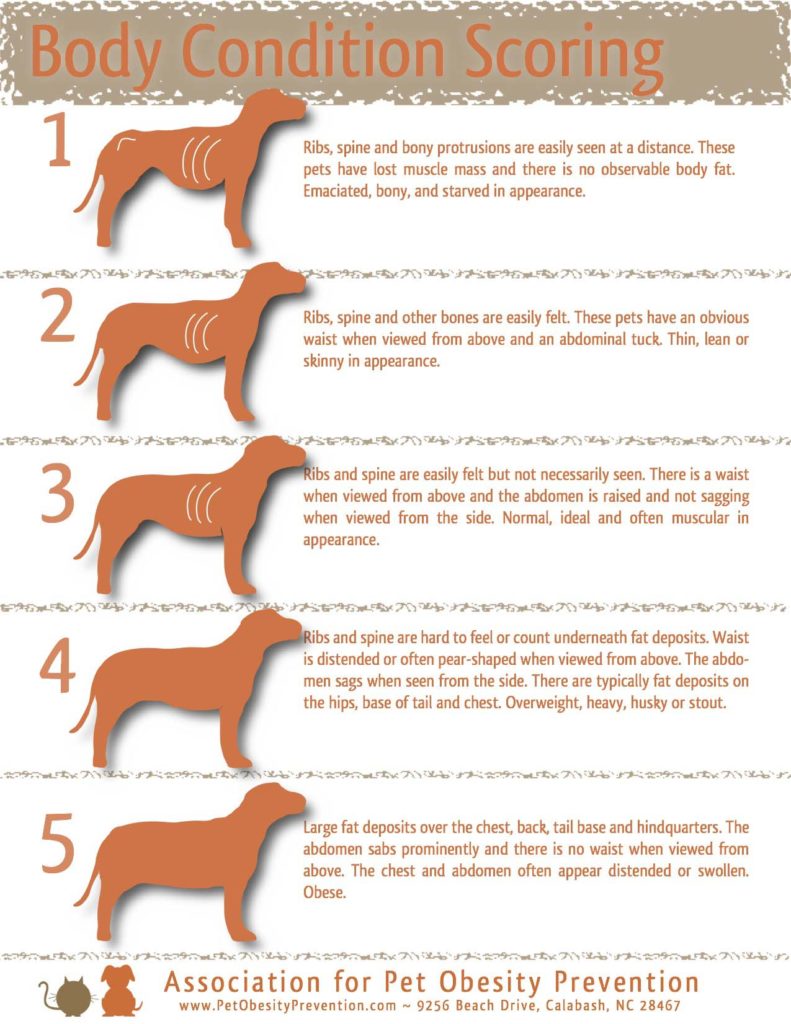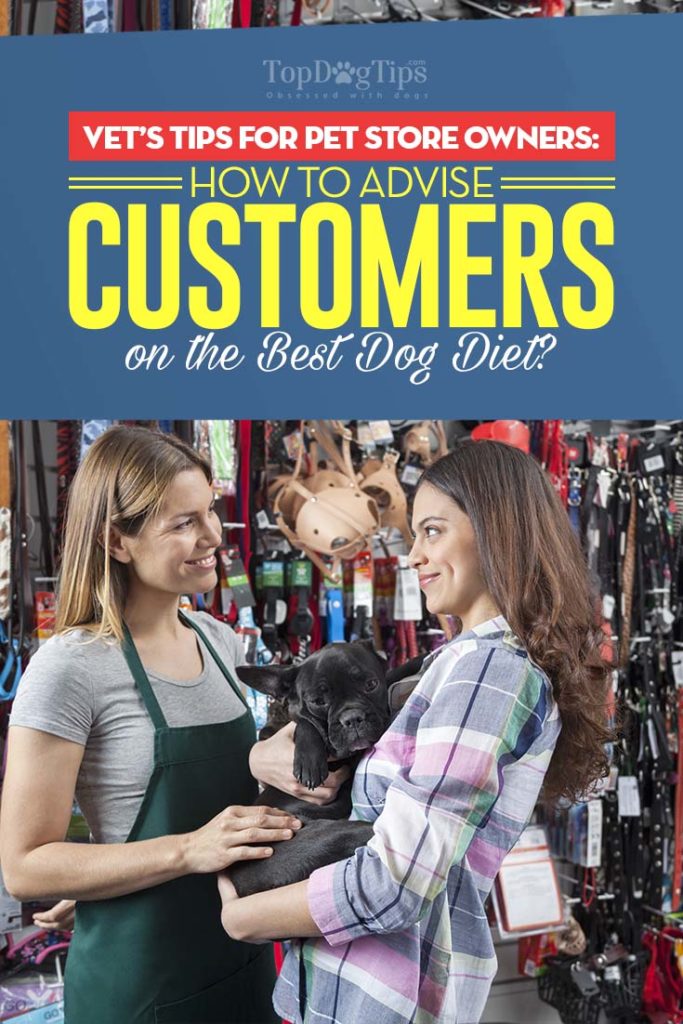
Table of Contents
Pet store owners are often the first people that dog owners turn to for advice on the proper diet for their canines. So, what's the best advice to give to pet owners for the most optimal dog food diet?
What many pet owners, hopefully, already know is that it's not possible to give sound advice without knowing the dog, its breed, age, and overall health condition. In this instance, you'll have to ask the right questions in order to give the right answers.
There is a wide range of dog food brands available, which can often make the selection process difficult and overwhelming. If you're a pet store owner, as the first point of contact, it is essential for you to provide dog owners with the confidence and reassurance that they are making the best decision for their dog's health and you're here to help.
Advising dog parents as a pet store owner
But helping dog owners choose a diet for their canines doesn't stop there. Further to the above, you must also find out the reason why a dog owner is looking for new dog food.
If your client is changing their pet’s diet, it is important to discuss a gradual change of pet food over a period of 5-7 days, and sometimes even 2 weeks. This can be done by replacing 15%-25% of the old food with the new diet until only the new diet remains.
Make sure the dog owner knows the importance of gradually introducing new food.
Encourage the client to have a conversation with their veterinarian before switching their pet's diet. It's important that their vet knows what is going on for two reasons:
- A vet can provide advice on proper nutrition and help select a food that will meet that specific dog's nutritional needs.
- If the dog has digestive (or other) issues due to the new diet, the veterinarian will be able to advise the owner on the right treatment.
Finally, as a pet store owner, never take on the responsibility of a veterinarian when asked for advice on dog nutrition or other health problems. Always make sure that while you know more than they do and are willing to give tips and advice, your clients must always consult with their vet before making any serious changes.
ALSO READ: 16 Things You Didn’t Know About Prescription Dog Food
5 Tips on How to Give Your Clients Advice About Their Dog's Diet and Best Foods

It's likely you already know most or all of these aspects of dog health. I will now go through them again as a reminder that you always need to inform your customers—dog owners—on what matters the most when picking the best dog food for their pets.
1. Canine Body Condition Score
A dog's Body Condition Score (BCS) is a vital consideration in a pet's general health, especially when picking out the best dog food diet. Here are two legit reference guides:
Briefly, a dog at the ideal weight (BCS 3-4) will have ribs that are easily palpable with an observable waist and abdomen tuck. In heavier dogs (BCS 5), the ribs may be felt with difficulty, and visible fat deposits can be seen on the back and tail. Dogs that are too thin or even emaciated (BCS 1-2) will have no body fat and little to no muscle mass.

This should be discussed with your client, with the benefits of an ideal weight and the importance of following feeding guidelines also being discussed. For dogs that are over the ideal weight, a calorie-restriction diet may need to be considered.
However, do not advise your client one way or the other. Simply inform them of what canine body condition score is and how they may want to continue feeding their dog.
You can always make pamphlets with the dog's Body Score Condition and a few dog food diet and nutrition tips to keep at your pet store and give out to your customers.
2. Initial Assessment of the Situation
During the initial assessment with your dog owner-customer, it is vital to gain insight into his or her pet and their overall health condition, as well as ask all the general questions I've mentioned above to get a clearer picture.
Some of the more important information to obtain in order to form a baseline:
- Pet's breed
- The pet’s life stage
- Canine Body Score (if they know)
- The pet’s lifestyle and exercise levels
- Any pre-existing conditions
- Any concerns the owner has for their pet
If you allow dogs to come inside your pet store, you should encourage your dog owner client to bring his dog in for an assessment.
Some owners may not realize that their dog is overweight or underweight (in fact, studies have shown that many pet owners often misjudge their dogs' and cats' weight and condition). You need accurate information to give the best advice, and this would be best.
RELATED: Understanding Dog Food – Do You Know What's In There?
3. Assessing Customer's Dog's Life Stage
There are several main life stages that are important to know when thinking about advising the best dog food diet for dog owners. Many other factors come into play as well (which is why it's always best to encourage them to consult with a vet), but knowing the basics can help them make the right choice.
Pregnant and lactating bitches
 During the first half of pregnancy of a dog, it should be recommended that the bitch is fed a normal healthy, balanced, and complete diet.
During the first half of pregnancy of a dog, it should be recommended that the bitch is fed a normal healthy, balanced, and complete diet.
Towards the second half of her pregnancy, it is recommended that she gradually begin introducing a growth/lactation dog food diet that is high in protein, fat, and trace nutrients.
This dog food diet for pregnant dogs can be given as needed, and the bitch should be allowed to graze. You can also recommend the food intake be increased by 1.2 to 1.4 times her maintenance intake as indicated.
During lactation, often the feed intake will increase further to up to 4 times maintenance.
This should be provided as wanted by the pet, and fresh, clean water needs to be available at all times, as well as other things taken care of. During this time, the puppies can also be encouraged to eat the food by softening it with water and warming it.
Puppyhood
 During the development life stage, puppies have specific dietary requirements and high energy requirements needed for growth. Puppies grow rapidly in the first months of their life, with completion expected in small breeds by 8-12 months of age and 10-16 months in large or giant breeds.
During the development life stage, puppies have specific dietary requirements and high energy requirements needed for growth. Puppies grow rapidly in the first months of their life, with completion expected in small breeds by 8-12 months of age and 10-16 months in large or giant breeds.
Throughout this whole time, they should receive a very specific type of healthy puppy food containing high-quality animal-based proteins. Adult dog food is not recommended.
For puppies that are weaning to 6 months of age, the recommendation is to feed three times daily. For small-breed puppies, this should continue until they are fully grown.
For all other breeds, puppies at the age of 6-12 months should be fed twice daily.
Many commercially available foods contain additives such as beet pulp and prebiotic FOS, which can be beneficial to aid nutrient absorption and support healthy digestion in puppies. This can be especially important during weaning and during the introduction to new environments that may cause stress to your dogs.
There are a range of commercially available puppy food diets that provide the nutritional requirements for different breeds of puppies. For puppies that are expected to be large adult dogs (over 55 lbs) when fully grown, a specific large breed puppy diet is needed.
As large breed dogs have a predisposition to skeletal problems due to fast growth, these diets are specifically formulated to ensure slow bone growth in puppies. For smaller breed puppies, you should recommend a dog food diet that is higher in protein and fat.
Adult and maintenance life stage
 Once a dog has reached 90% of his expected adult weight, he should be provided with a healthy and balanced maintenance diet until the age of 7. These dog food brands are often labeled as adult dog food formulas.
Once a dog has reached 90% of his expected adult weight, he should be provided with a healthy and balanced maintenance diet until the age of 7. These dog food brands are often labeled as adult dog food formulas.
Around the age of 7, a senior dog food diet can be considered, which I discuss below.
For adult dogs and the maintenance stage, the best method of feeding is by giving two meals at regular times each day, which is the most common way to feed canines.
For working or athletic dogs, it is recommended that they are given a smaller portion of their daily ration prior to work/activity, with the rest of the portion given upon completion.
For adult pets of a healthy weight that have previously been obese, regular exercise as well as carefully measured daily rations is key to maintaining optimal weight. Preserving lean muscle during and after weight loss has been shown to help prevent gaining excess weight.
Senior geriatric dogs
 Geriatric dogs have different dietary requirements than younger dogs, whether puppies or adult dogs. As older pets are more likely to be affected by medical conditions, it is vital that dog owners have a discussion with a vet regarding this for the best plan of action.
Geriatric dogs have different dietary requirements than younger dogs, whether puppies or adult dogs. As older pets are more likely to be affected by medical conditions, it is vital that dog owners have a discussion with a vet regarding this for the best plan of action.
You should also encourage dog owners to discuss specific dog food brands for senior pets and exactly what kind of nutrition would be best for their old dogs based on their current age and health condition.
Senior dog diets will often contain ingredients to provide relief from degenerative diseases, such as canine arthritis, with more omega 3 and omega 6 added in.
These essential fatty acids are clinically proven to reduce inflammation and reduce the need for pain medication, particularly in arthritic dogs. Essential fatty acids (EPA and DHA) are also beneficial for dog's mental health, which is vital for aging animals. A pet supplement such as fish oil for dogs can be considered and is usually advised by vets.
Due to changes in metabolism with age, a lower-fat diet may also be considered to prevent obesity in geriatric dogs. There are a range of diets specifically formulated for age-related conditions, such as chronic kidney problems or liver disease and failure, which should be discussed with a veterinarian if needed.
4. Pre-existing Conditions in Customers' Dogs
It is very important that you discuss any concerns and pre-existing conditions that may exist in your customer's dog(s). There is a range of specialty canine food formulas and diets available to best suit dogs with some specific health issues.
Again, be sure to encourage the client to seek veterinary advice first before switching their dog's diet – especially if they are hoping to address a particular health concern.
The same applies to picking the type of pet food, whether they want to feed standard dry kibble, choose the best dehydrated dog food, or go with natural raw dog food.
Always be careful when advising a diet for specific health conditions.
For example, for dog owners who are concerned about their dog's dental health, there are numerous dog food brands that promote dental health in dogs. These foods are designed to remove existing plaque and prevent further build-up. However, studies have shown that very few of them are as effective as dental dog treats (such as Greenies brand).
Another example would be dogs with food allergies that require hypoallergenic dog food or canines with kidney problems and renal disease. For the latter, the key is to decrease the amount of protein consumed, so low-protein dog foods are usually advised.
In the case of other conditions, such as food allergy dermatitis or customers' concerns of food sensitivities in dogs, over-the-counter foods can also be recommended. Make sure that you emphasize the importance of using this as the sole source of nutrition.
Another important note: Providing other nutrition—dog treats, snacks, or table scraps may cause dietary reactions and counteract the benefits of feeding a sensitive diet. You can always remind dog owners who still believe some of those myths that impact pets.
For dogs with liver disease, there are a range of veterinary therapeutic diets, also known as prescription dog food, that can be a vital part of nutritional management. Because these dog food diets often need a prescription, clients should be encouraged to discuss with their veterinarian whether a therapeutic diet is the right choice.
Recently, there's been a lot of noise about vet diets and controversies regarding the whole pet food industry, so as a pet store owner who sells pet food and advises customers on the best dog food diets, it's important you keep tabs on what's going on and current research.
5. Calculating Daily Feeding Recommendations
 How much to feed a dog depends mostly on that specific canine and the many other questions I've mentioned in the first section of this article. Mention to your customers that feeding recommendations will require more details about their individual pets.
How much to feed a dog depends mostly on that specific canine and the many other questions I've mentioned in the first section of this article. Mention to your customers that feeding recommendations will require more details about their individual pets.
Same as above, a dog's calorie requirement is affected by a range of factors, including:
- A dog's age
- Neutering/spaying status
- Dog's life stage
- Weight and Body Condition Score
- Underlying health conditions
The best quality dog food brand will outline a guide for feeding the pet, but it is vital to discuss with the client that this is a starting point that can be adjusted if needed.
A starting amount of calories from dog food should be chosen using the nutritional label on the food package selected for the pet, with regular assessments performed to ensure the dog is maintaining optimal body weight and condition.
With the above information in mind, you should be able to assess your customer's dogs' condition more quickly and easily and give them the best advice on how to feed their dogs and what dog food brands to recommend. Always make sure to encourage dog owners who visit your pet store to consult with a veterinarian before making any choice.
READ NEXT: Expensive Dog Food Brands – Are They Worth the High Cost?













